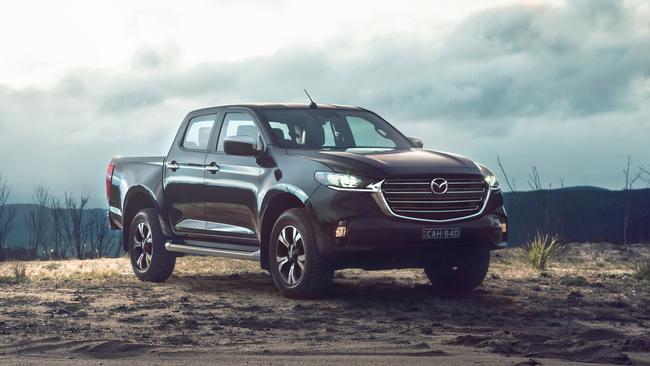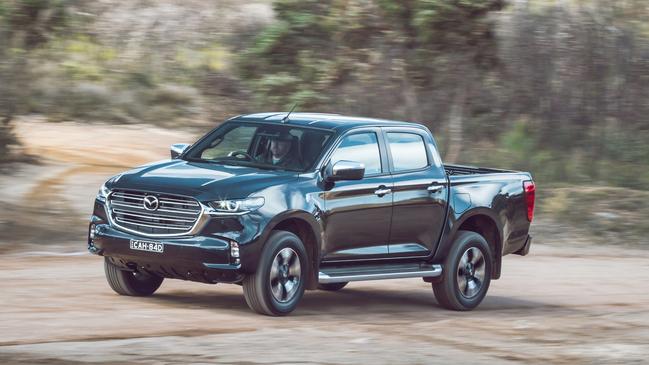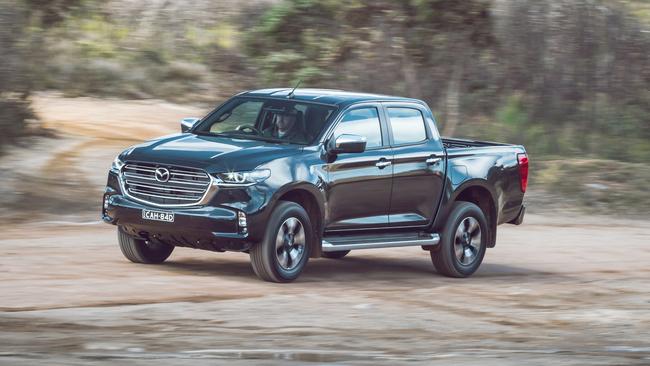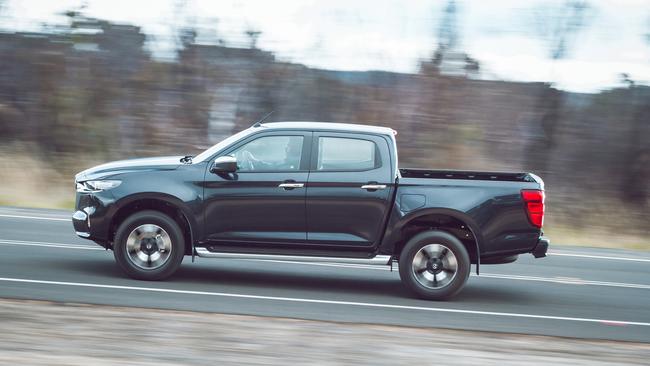Mazda BT-50 review: New dual-cab ute is a solid performer but misses the mark
Utes are big business in Australia - the Toyota HiLux and Ford Ranger are the best-selling vehicles in the country. This latest challenger comes from a brand with a stellar reputation.

New Cars
Don't miss out on the headlines from New Cars. Followed categories will be added to My News.
The Mazda BT-50 is a very different ute to its predecessor.
The previous model shared its DNA with the Ford Ranger, while the new one is a re-skinned Isuzu D-Max, sharing engines, transmissions, chassis and suspension.

The main difference is the sheet metal, where Mazda departs from the square-jawed, truck-like styling of rivals for the smoother lines and curves of its SUV range.
The jury’s out on whether tradies will warm to the look.
The new BT-50 picks up all the safety tech available on the D-Max, including auto emergency braking with pedestrian detection, rear cross-traffic alert, active cruise control, lane keeping assistance and more.
But the segment-leading interior quality of Mazda’s best models is missing. Sub-par finishes on the steering wheel and doors would never be found on a $30,000 Mazda passenger car, let alone a model costing double that.

Priced from $44,090 in basic BT-50 XT trim to $59,990 plus on-road costs for the fully-loaded BT-50 GT, the new model is more expensive than before.
It also costs a lot more than the D-Max, which ranges from $29,990 drive-away for the SX to $58,990 drive-away for the range-topping X-Terrain.
The Isuzu comes with a six-year, 150,000 kilometre warranty customers might find more attractive than Mazda’s five-year, unlimited-kilometre guarantee. At $2289 for five years, servicing is $294 more than the Isuzu.
The basic BT-50 XT comes with 17-inch alloys, LED headlamps and aircon, as well as a 7-inch touchscreen with digital radio, Android Auto and wireless Apple CarPlay.

Mid-grade XTR models add a 9-inch touchscreen with satnav and smart key, plus 18-inch wheels, dual-zone climate control and handy touches such as side steps and fog lamps. The range-topping BT-50 GT brings heated seats with brown leather trim, along with front parking sensors and power driver’s seat adjustment.
A “Boss adventure pack” with black wheels, a bull bar, driving lights, sports bar and other niceties costs about $14,000.
We tested the machine in mid-range BT-50 XTR four-wheel-drive trim with an optional six-speed auto priced from about $62,600 drive-away.

The divorce from Ford and new partnership with Isuzu has resulted in a smaller and less powerful (but more efficient) motor under the bonnet. Downsizing from a 3.2-litre five-cylinder turbo-diesel to a 3.0-litre four-cylinder unit, the BT-50 claims 140kW (down from 147kW) and 450Nm of torque (down from 470Nm) along with 8L/100km fuel use, which represents an improvement of about 13 per cent.
It will tow up to 3.5 tonnes on a braked trailer and all models can carry at least 1000 kilos including passengers.
The Isuzu engine feels punchy enough in the real world, but can’t quite match the effortless shove of 500Nm-plus rivals such as the updated HiLux, Ford’s BiTurbo Ranger or VW’s segment-leading Amarok V6. All three of those also feel more refined than the BT-50 on the road, with superior noise suppression and smoother transmissions.

Mazda adopted Isuzu’s preference for light steering that’s easy to work with at parking speed, but a little vague on the highway. The BT-50’s unladen ride is also busy, skipping on rough surfaces.
That’s disappointing, as most Mazdas are among the best vehicles in their class to drive.
An off-road jaunt in the new machine revealed a stable platform that dealt with steep climbs, slippery surfaces and the odd muddy patch with ease. Shifting from two to four-wheel-drive is as easy as twisting a knob and the standard rear diff locker is a handy insurance policy when exploring.

Out on the highway, the BT-50’s active cruise control and wireless smartphone mirroring help you relax in traffic, but the safety systems can feel overbearing at times.
The camera-based speed sign recognition repeatedly adopted 60km/h speed limits for exits on a 100km/h motorway, and its forward collision warning went to red alert when windscreen washers briefly obscured its sensors.
VERDICT 3/5
The new Mazda BT-50 is a good truck, with strong safety credentials and sophisticated looks. But it doesn’t feel like a Mazda — either to drive, or to sit in — and it’s hard to justify dollars spent over and above its Isuzu donor vehicle.
MAZDA BT-50 XTR AUTO VITALS
Price: About $62,600 drive-away
Warranty/servicing: 5 yrs/unlimited km, $2289 for 5 years/75,000km
Safety: 5 stars (2020), 8 airbags, blind-spot warning, auto emergency braking, traffic sign recognition, rear cross-traffic alert, lane-keep assist
Engine: 3.0-litre 4-cyl turbo diesel, 140kW/450Nm
Thirst: 8.0L/100km
Tow capacity: 3500kg
Spare: Full size
Originally published as Mazda BT-50 review: New dual-cab ute is a solid performer but misses the mark
